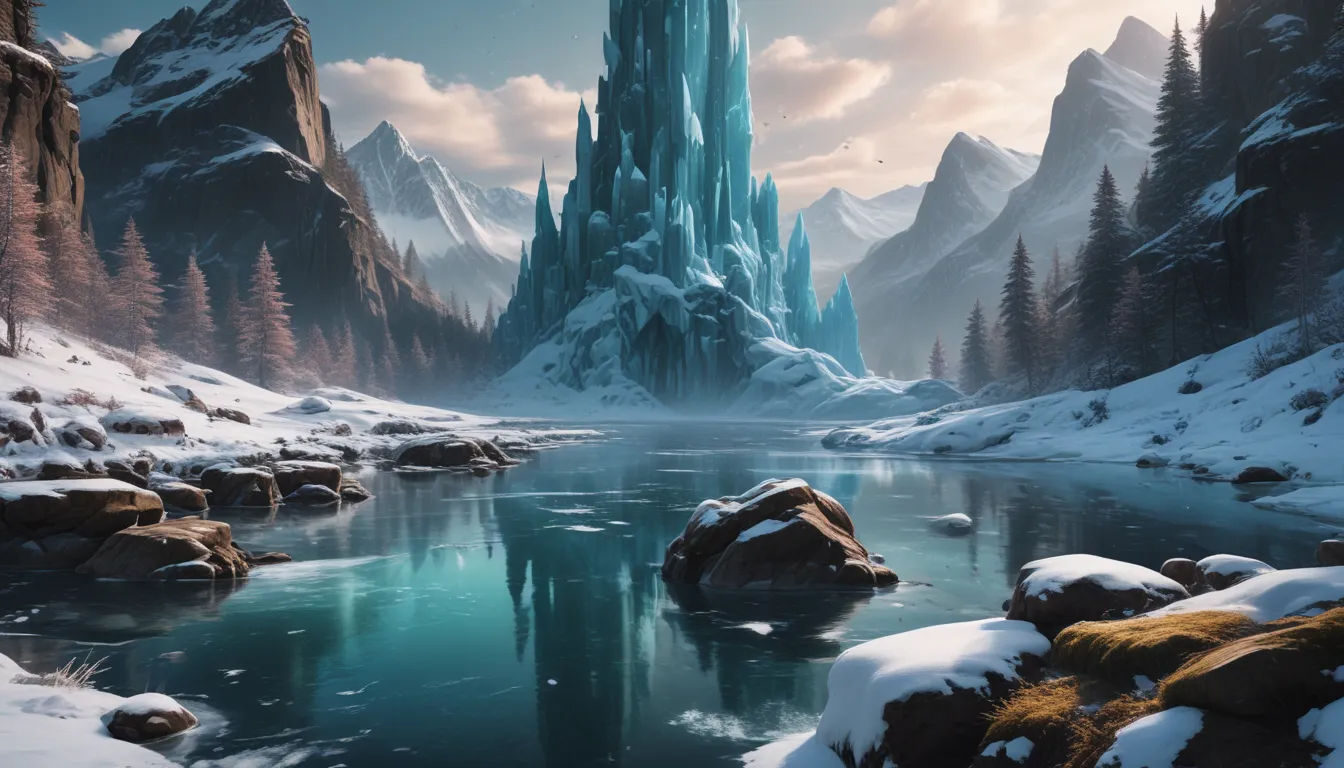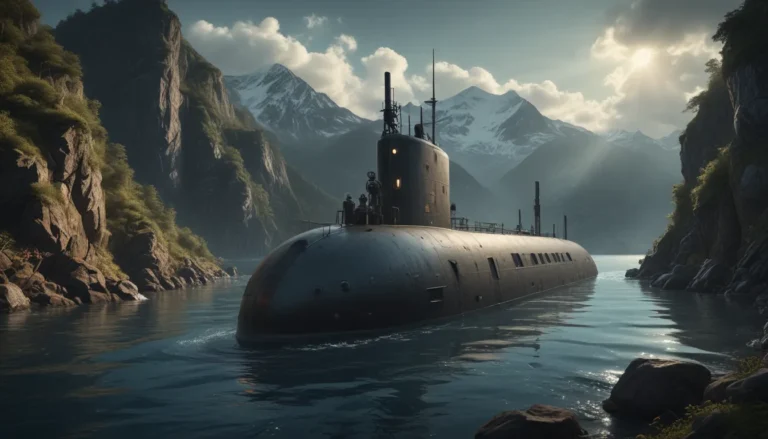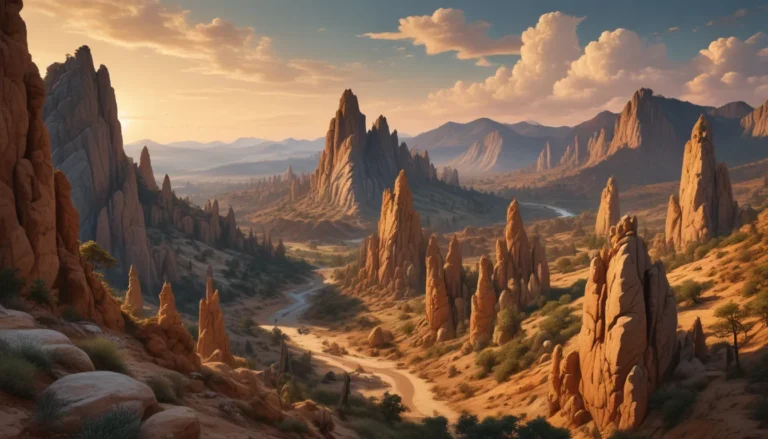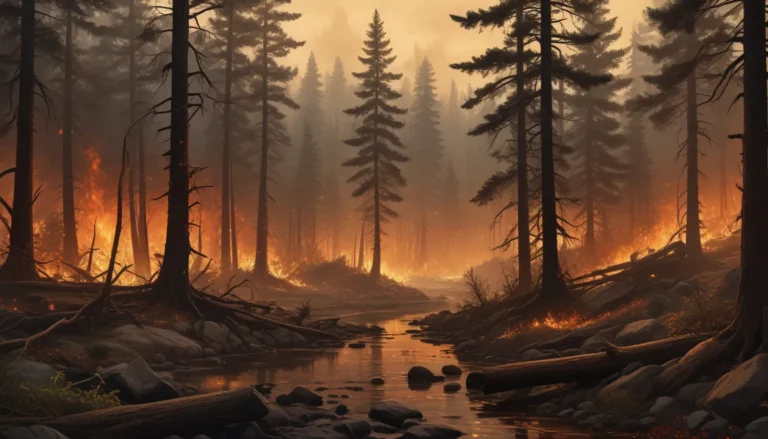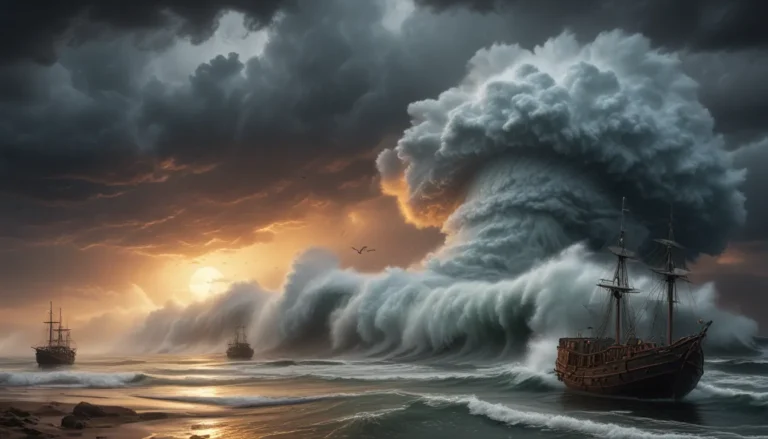A Note About Images: The images used in our articles are for illustration purposes only and may not exactly match the content. They are meant to engage readers, but the text should be relied upon for accurate information.
Are you ready to embark on an icy journey through the wonders of the cryosphere? The cryosphere, derived from the Greek word “kryos” meaning cold, encompasses the frozen portion of the Earth’s surface. From glaciers to permafrost, the cryosphere plays a crucial role in regulating global climate patterns and preserving freshwater resources. In this article, we will uncover 13 intriguing facts about the cryosphere, shedding light on its significance in understanding our planet’s delicate balance. Let’s delve into the frozen world and discover the wonders that lie within the icy realm!
Key Takeaways:
- The Cryosphere holds 69% of the world’s freshwater and plays a vital role in regulating the Earth’s climate and environment.
- Climate change is causing the Cryosphere to shrink, leading to sea-level rise, habitat loss for polar bears, and potential water shortages in some regions.
- Understanding and protecting the Cryosphere is essential for our planet’s future.
What is the Cryosphere?
The Cryosphere refers to regions of the Earth where water exists in its solid form, including ice sheets, glaciers, snow, frozen ground, and sea ice. These frozen components play a crucial role in shaping our planet’s climate and environment, making the Cryosphere a critical element in the Earth’s system.
Glaciers Hold a Vast Amount of Freshwater
Did you know that glaciers store about 69% of the world’s freshwater? Acting as frozen reservoirs, glaciers slowly release water over time, providing a vital resource for human consumption, agriculture, and ecosystems. The importance of glaciers in preserving freshwater resources cannot be overstated.
The Largest Ice Sheet is in Antarctica
Antarctica is home to the largest ice sheet on Earth, covering around 14 million square kilometers. Holding about 90% of the world’s ice and 70% of its fresh water, this massive ice sheet plays a crucial role in the global hydrological cycle. The preservation of Antarctica’s ice sheet is essential for maintaining the Earth’s delicate balance.
Permafrost: The Frozen Ground
Permafrost, found in high-latitude regions like the Arctic, refers to permanently frozen ground. It contains vast amounts of organic material trapped in ice, and its thawing due to climate change releases greenhouse gases, exacerbating global warming. The implications of permafrost thawing are significant for our planet’s climate.
Glacier Calving: A Spectacular Phenomenon
Glacier calving is a breathtaking process where large chunks of ice break off from the edge of a glacier and into the water. This natural spectacle often results in massive icebergs, posing hazards to navigation and contributing to sea-level rise. Witnessing glacier calving is a stunning reminder of the Cryosphere’s dynamic nature.
The Cryosphere and Climate Change
The Cryosphere is highly vulnerable to climate change, with rising global temperatures causing the shrinkage of glaciers, melting of ice caps, and reduction of sea ice extent. These changes have far-reaching implications for global sea-level rise and alterations in regional climates. Understanding the impacts of climate change on the Cryosphere is crucial for our planet’s future.
Arctic Sea Ice and the Polar Bear
Arctic sea ice serves as a critical hunting platform for polar bears, whose habitat is threatened by melting ice. As the sea ice diminishes, polar bears face challenges in finding food, highlighting the intricate connection between the Cryosphere and the survival of iconic Arctic species. Preserving Arctic sea ice is essential for protecting polar bear populations.
The Importance of Snow
Snowfall plays a vital role in regulating the Earth’s temperature. The bright surface of snow reflects a significant amount of solar radiation back into space, helping to cool the planet. Changes in snow cover can have implications for climate patterns and water availability, underscoring the importance of snow in our planet’s climate system.
Cryosphere and Water Resources
The melting of glaciers and ice caps contributes to rising sea levels, posing risks to coastal communities. Several regions depend heavily on glacier meltwater for their water supply, making them vulnerable to shortages as glaciers recede. Preserving the Cryosphere is crucial for ensuring water availability in these regions.
Ancient Ice Cores: A Window into the Past
Scientists extract ancient ice cores from ice sheets, offering insights into past climate conditions. These ice cores contain trapped air bubbles and dust particles, providing a snapshot of atmospheric composition and temperature throughout history. Studying ancient ice cores is essential for understanding our planet’s climate history.
Frozen Lakes: Hiding Life Beneath the Surface
Beneath the frozen surfaces of lakes and ponds lies a hidden ecosystem teeming with life. Microorganisms, fish, and other aquatic organisms adapt to survive in extreme conditions, showcasing the resilience and adaptability of nature. Exploring the diverse life forms in frozen lakes unveils the beauty of the Cryosphere’s hidden ecosystems.
Cryosphere and the Earth’s Albedo
The Cryosphere significantly influences the Earth’s albedo, reflecting sunlight back into space. The white surfaces of ice and snow reflect more solar radiation, helping to cool the planet. Declining ice cover leads to reduced albedo and further warming, emphasizing the importance of preserving ice and snow in maintaining the Earth’s energy balance.
Cryosphere and Future Mitigation Strategies
The Cryosphere plays a critical role in climate models and future mitigation strategies. Understanding its dynamics and monitoring changes are vital for predicting and mitigating the impacts of climate change on natural and human systems. By prioritizing research and conservation efforts, we can work towards safeguarding the Cryosphere for future generations.
Conclusion
In conclusion, the cryosphere is a fascinating and essential component of our Earth’s system. From preserving freshwater resources to regulating global climate patterns, the Cryosphere plays a pivotal role in maintaining the delicate balance of our planet. By studying its characteristics, monitoring its changes, and raising awareness about its significance, we can contribute to the preservation of this fragile system for future generations. Let’s continue to admire and protect the cryosphere, cherishing its icy wonders while taking action to combat the challenges posed by climate change.
FAQs
- What is the cryosphere?
-
The cryosphere refers to the frozen components of the Earth’s surface, including snow, ice, glaciers, ice sheets, permafrost, and sea ice.
-
Why is the cryosphere important?
-
The cryosphere plays a crucial role in regulating the Earth’s climate, reflecting sunlight back into space, influencing ocean currents, and providing freshwater resources.
-
How does the cryosphere contribute to climate change?
-
The cryosphere is highly sensitive to changes in temperature and can amplify climate change. Melting ice contributes to rising sea levels and alters weather patterns.
-
What are some effects of melting ice on the cryosphere?
-
Melting ice leads to reduced albedo, increased ocean temperatures, loss of habitat for polar species, and disruption of global weather patterns.
-
Can the cryosphere recover from the effects of climate change?
- While it is challenging for the cryosphere to fully recover from the impacts of climate change, efforts to reduce greenhouse gas emissions and mitigate human-induced changes can help slow down further deterioration.
Explore the wonders of the cryosphere and unravel its secrets hidden within the icy landscapes. From the majestic beauty of glaciers to the dynamic changes in Arctic sea ice, the Cryosphere offers a wealth of knowledge waiting to be discovered. By understanding, appreciating, and safeguarding the frozen realm, we can contribute to a sustainable future for our planet. Let’s continue exploring the icy wonders of the cryosphere, unraveling its mysteries one discovery at a time.
